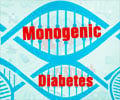A new study by researchers at the Johns Hopkins Bloomberg School of Public Health has suggested that measurements of hemoglobin A1c (HbA1c) more accurately identify persons at risk for diabetes than the commonly used measurement of fasting glucose.
As a diagnostic, "HbA1c has significant advantages over fasting glucose," said Elizabeth Selvin, the study's lead author.The A1c test has low variability from day to day, levels are not as affected by stress and illness, it has greater stability and the patient is not required to fast before the test is performed.
This study is published on the heels of a major change in the way doctors diagnose diabetes. In January, the American Diabetes Association (ADA) published revised recommendations for the screening and diagnosis of diabetes.
The revised recommendations include, for the first time, recommendations to use HbA1c to diagnose diabetes and also to identify people at risk of developing diabetes in the future, also known as "pre-diabetes."
The new findings can help doctors and patients interpret HbA1c test results.
In the study, people with HbA1c levels between 5.0 to 5.5 percent were identified as being within "normal" range.
Advertisement
The revised ADA guidelines classify people with HbA1c levels in the range of 5.7 to 6.4 percent as "at very high risk" for developing diabetes over 5 years.
Advertisement
The study appears in the March 4, 2010, issue of New England Journal of Medicine.
Source-ANI
TAN















